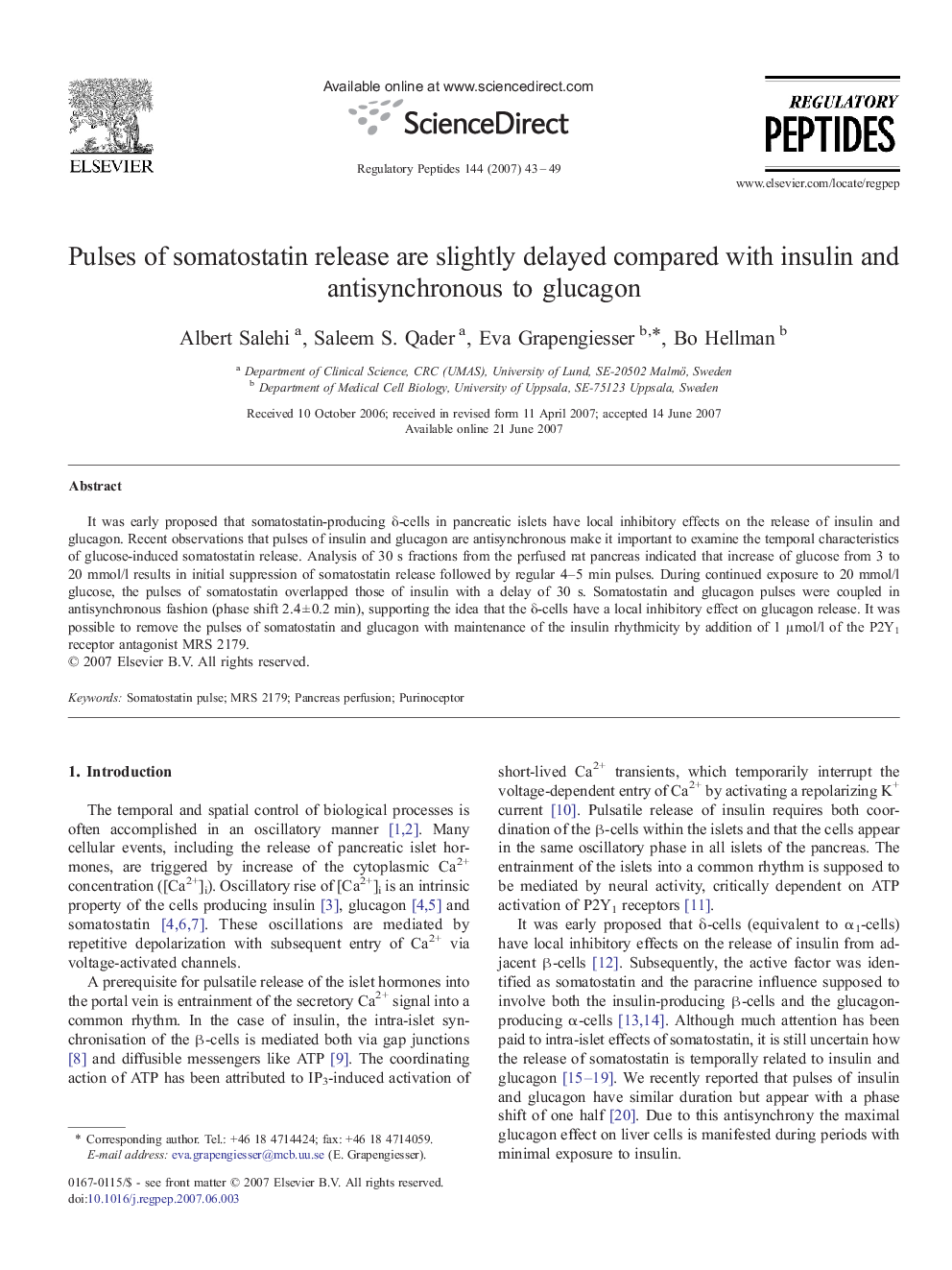| Article ID | Journal | Published Year | Pages | File Type |
|---|---|---|---|---|
| 2023347 | Regulatory Peptides | 2007 | 7 Pages |
It was early proposed that somatostatin-producing δ-cells in pancreatic islets have local inhibitory effects on the release of insulin and glucagon. Recent observations that pulses of insulin and glucagon are antisynchronous make it important to examine the temporal characteristics of glucose-induced somatostatin release. Analysis of 30 s fractions from the perfused rat pancreas indicated that increase of glucose from 3 to 20 mmol/l results in initial suppression of somatostatin release followed by regular 4–5 min pulses. During continued exposure to 20 mmol/l glucose, the pulses of somatostatin overlapped those of insulin with a delay of 30 s. Somatostatin and glucagon pulses were coupled in antisynchronous fashion (phase shift 2.4 ± 0.2 min), supporting the idea that the δ-cells have a local inhibitory effect on glucagon release. It was possible to remove the pulses of somatostatin and glucagon with maintenance of the insulin rhythmicity by addition of 1 μmol/l of the P2Y1 receptor antagonist MRS 2179.
